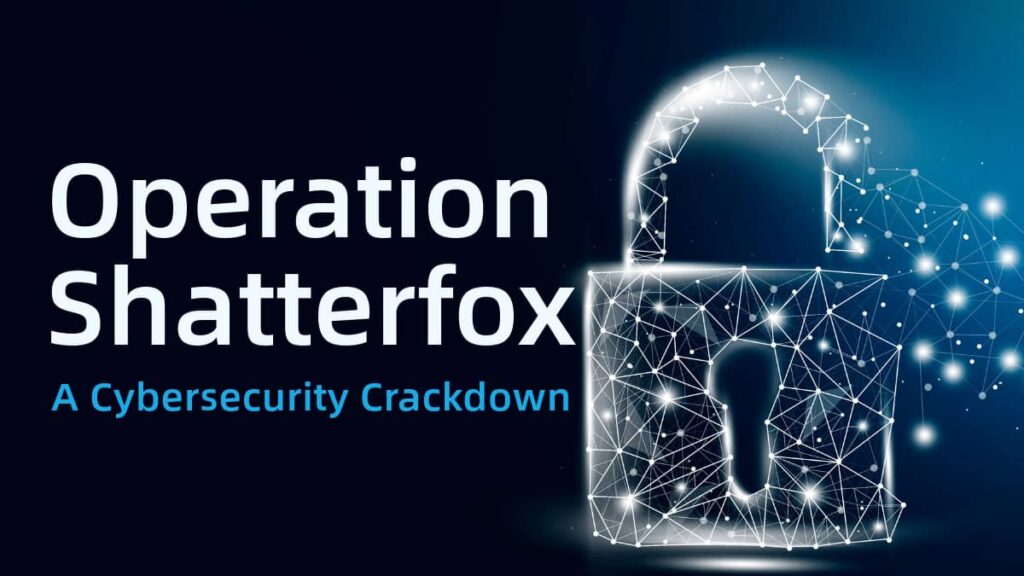Operation Shatterfox was a coordinated effort to combat cybercriminals deploying sophisticated malware.
This operation focused on dismantling networks of hackers using malware to steal sensitive data and financial assets.
The investigation revealed critical security threats, exposing vulnerabilities in digital infrastructures.

What Is Operation Shatterfox?
Operation Shatterfox was a cybersecurity initiative targeting a group of cybercriminals responsible for malware attacks.
These hackers used advanced techniques to compromise financial systems and steal personal data.
Authorities and cybersecurity experts collaborated to track and neutralize these threats.
Key Takeaways
- Operation Shatterfox targeted cybercriminals behind malware attacks.
- The malware stole personal and financial data while evading detection.
- Law enforcement agencies collaborated to disrupt cybercrime networks.
- Preventative cybersecurity measures can help individuals stay protected.
- Future operations will be necessary to combat evolving cyber threats.
How the Malware Worked
The attackers used a specialized malware strain capable of infiltrating systems undetected. Key features of the malware included:
Credential Theft: The malware logged keystrokes and accessed saved passwords.
Financial Fraud: It extracted banking information and executed unauthorized transactions.
Remote Control: Hackers gained remote access to compromised devices.
Evasion Tactics: The malware employed advanced techniques to avoid detection.
Who Was Behind the Attacks?
Investigators traced the operation to a network of cybercriminals operating across multiple countries.
These individuals used encrypted communication channels and proxy networks to mask their identities.
Law enforcement agencies worked with cybersecurity firms to identify and apprehend the key figures involved.
Table of major cyber attacks from the last 10 years:
| Year | Cyber Attack | Target(s) | Impact |
|---|---|---|---|
| 2014 | Sony Pictures Hack | Sony Pictures Entertainment | Massive data breach, leaks of confidential emails, and unreleased films. |
| 2015 | Anthem Inc. Data Breach | Anthem Inc. (Healthcare) | Stolen data of 80 million customers, including social security numbers. |
| 2016 | Yahoo Data Breach | Yahoo | 3 billion user accounts compromised. |
| 2017 | WannaCry Ransomware | Multiple industries worldwide | 200,000+ devices infected, disrupting hospitals, businesses, and transportation. |
| 2018 | Marriott Data Breach | Marriott International | Data of 500 million guests exposed. |
| 2019 | Capital One Data Breach | Capital One | 106 million records stolen, including credit card applications. |
| 2020 | SolarWinds Hack | US Government & Fortune 500 Companies | Russian-backed hackers infiltrated federal agencies and private firms. |
| 2021 | Colonial Pipeline Ransomware Attack | Colonial Pipeline (US) | Gas shortages and economic disruption due to pipeline shutdown. |
| 2022 | Uber Data Breach | Uber | Hacker accessed sensitive company data and internal communications. |
| 2023 | MOVEit Data Breach | Multiple organizations | Millions of records stolen from government and private entities. |
The Impact of Operation Shatterfox
The crackdown led to:
Arrests of Key Suspects: Authorities detained several hackers linked to the malware.
Disruption of Cybercrime Networks: The operation disrupted malware distribution channels.
Security Patches & Awareness: Companies updated security measures to prevent future breaches.
Recovery of Stolen Data: Some victims regained access to compromised accounts.
Preventative Measures Against Cyber Attacks
To avoid falling victim to cyber threats like those exposed in Operation Shatterfox, individuals and organizations should:
Use Strong Passwords: Implement complex and unique passwords for accounts.
Enable Two-Factor Authentication: Adds an extra security layer to accounts.
Update Software Regularly: Patch vulnerabilities to prevent malware infiltration.
Monitor Financial Activity: Check bank statements for unauthorized transactions.
Avoid Suspicious Links & Emails: Phishing attacks often lead to malware infections.
Future Implications of Cybersecurity Operations
Operations like Shatterfox highlight the evolving nature of cybercrime and the importance of proactive defense strategies.
As hackers develop more sophisticated methods, cybersecurity experts and law enforcement must continuously adapt to new threats.
Strengthened international cooperation will be crucial in future cybercrime crackdowns.
FAQs
What was the main goal of Operation Shatterfox?
The operation aimed to dismantle a cybercriminal network using malware to steal financial and personal data.
How did the malware affect victims?
It stole sensitive information, allowing hackers to commit fraud, access bank accounts, and control infected devices remotely.
Were the hackers caught?
Yes, several suspects were identified and arrested through international cybersecurity efforts.
How can individuals protect themselves from similar attacks?
Using strong passwords, enabling two-factor authentication, and updating security software can reduce the risk of cyber threats.
What industries were most affected?
Financial institutions, e-commerce platforms, and individuals with weak cybersecurity measures were primary targets.
Disclaimer
This article is for informational purposes only. It does not provide legal or cybersecurity advice. Consult a professional for guidance on cybersecurity best practices.
Jane Lee is a versatile writer and storyteller with a passion for exploring diverse themes through her work. With a background in literature and creative writing, Jane has authored numerous articles and stories that captivate and inspire readers.

